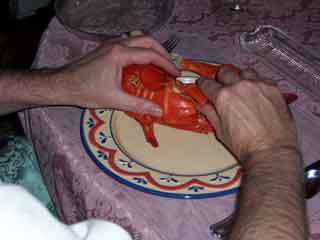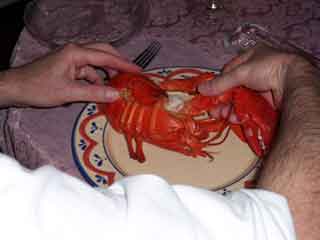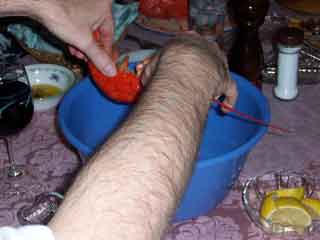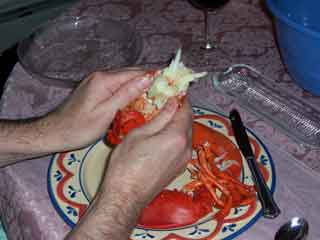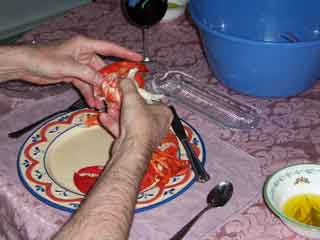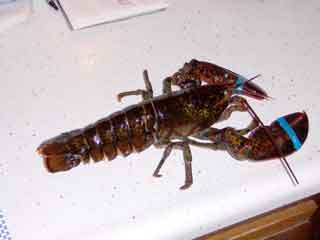But stovetop? Yup. You ever read the ingredients on that microwave stuff?
Look, for nearly a decade while doing the 80 hour workweek thing, we used (pick your favorite brand) microwave popcorn. Toss it in, push a few buttons; 5 minutes later dump it in a bowl and back to the entertainment. What could be more bettah?
Well, how about something that doesn’t involve any of those multi-syllabic chemical names, that costs $0.99 lb. (about 273 servings!), that takes no longer to prepare, that allows you to control the amount and type of oil/fat you use, that allows you to control the amount of salt you use (if any . . .), and that's (almost) always (nearly) perfect. It’s called popcorn. You can do it!
Here’s the trick.
Put a layer of olive oil in the bottom of a saucepan. It doesn’t really matter how big your saucepan is – though 1 qt. Pans don’t really work very well – too little surface area; but if that’s all you’ve got, hey, give it a try! The idea is to coat the bottom of the pan. No more than 1/3 the height of a popcorn kernel (on its side), but more than just a glistening wipe.

If you must measure things, generally about 2 Tbsp. Of oil will pop about 1/3 cup of popcorn – just enough for one or two snackers, barely enough for one fiend.
But if you get in the habit of using the pan as your guide, you won’t need to drag out any of those measuring implements, much less clean them up afterwards!
So. A layer of oil. Now, if you want to make it ultima-perfect, toss in a scoop of Smart Balance (or your favorite butter substitute). If you want to use real butter, you probably should use clarified butter. Clarified butter has just enough higher a smoke point to work in this scheme. Regular butter lurks on the edge of burned yukko. (Clarified? See Lobster . . .)

So. Oil and butter substitute in the pan. Turn the burner on to warm and wait for the butter to melt. When it has, swirl the pan to mix it all up. Now cover the bottom of the pan with popcorn, a layer 1 kernel thick, no more.
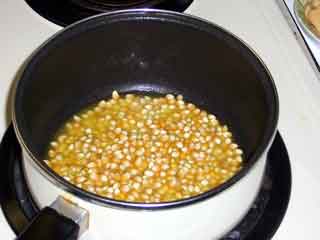
You see, this is part of the self-measuring thing. One layer of oil, just to cover the bottom of the pan; one layer of popcorn, just to cover the bottom of the pan. No higher math, no arithmetic, no measuring implements; just pour some in, pour some more, cook . . .
OK. Cover the pot, and crank the heat to medium plus the next notch – about 4 O’clock on the dial, or whatever is the right spot on your stove. And, yes, you may have to experiment a bit to find that spot. But at about $0.05 per batch, don’t worry if you have to ruin a couple to perfect this process!

Now listen carefully! No, not to me, to your pan! As soon as the first kernel goes Pop! (not sizzle, not pluhhh, not pfffssssd, but Pop), take the pan off the burner and time exactly 1 minute. Leave the heat up on the burner you came from; you’ll be going back. And Do Not open the lid of the pan. Just time off exactly 60 seconds.

Now put the pot back on the heat. Shake, rattle and roll! Or shake, swirl and jiggle, at least. Doesn’t have to be fast, just steadily. Keep the stuff in your pan in gentle motion over the heat.
In another minute or so, you’ll hear the popping begin. And it will continue, increasing in fervor for a bit and then slowing, and then nearly stopping, and then, count to 7, no more.
Pop the lid, swirl the pan,

and dump the perfect popcorn into your popcorn bucket. Salt if you wish (I usually do – just table salt, the coarse stuff is too big for popcorn); a little on top, swirl and flip the bucket to distribute that shake, and then do another quick shake over ‘the new top.’

Shake, Eat, Enjoy . . .


